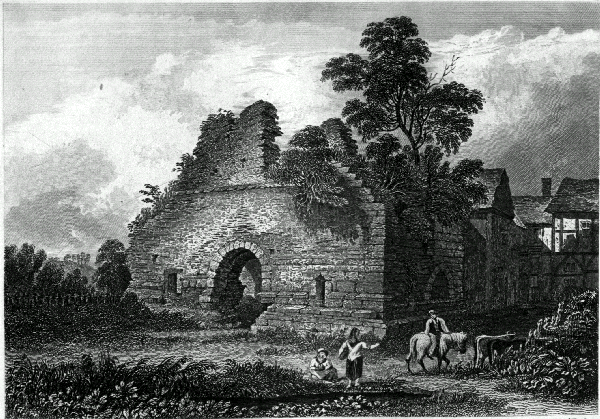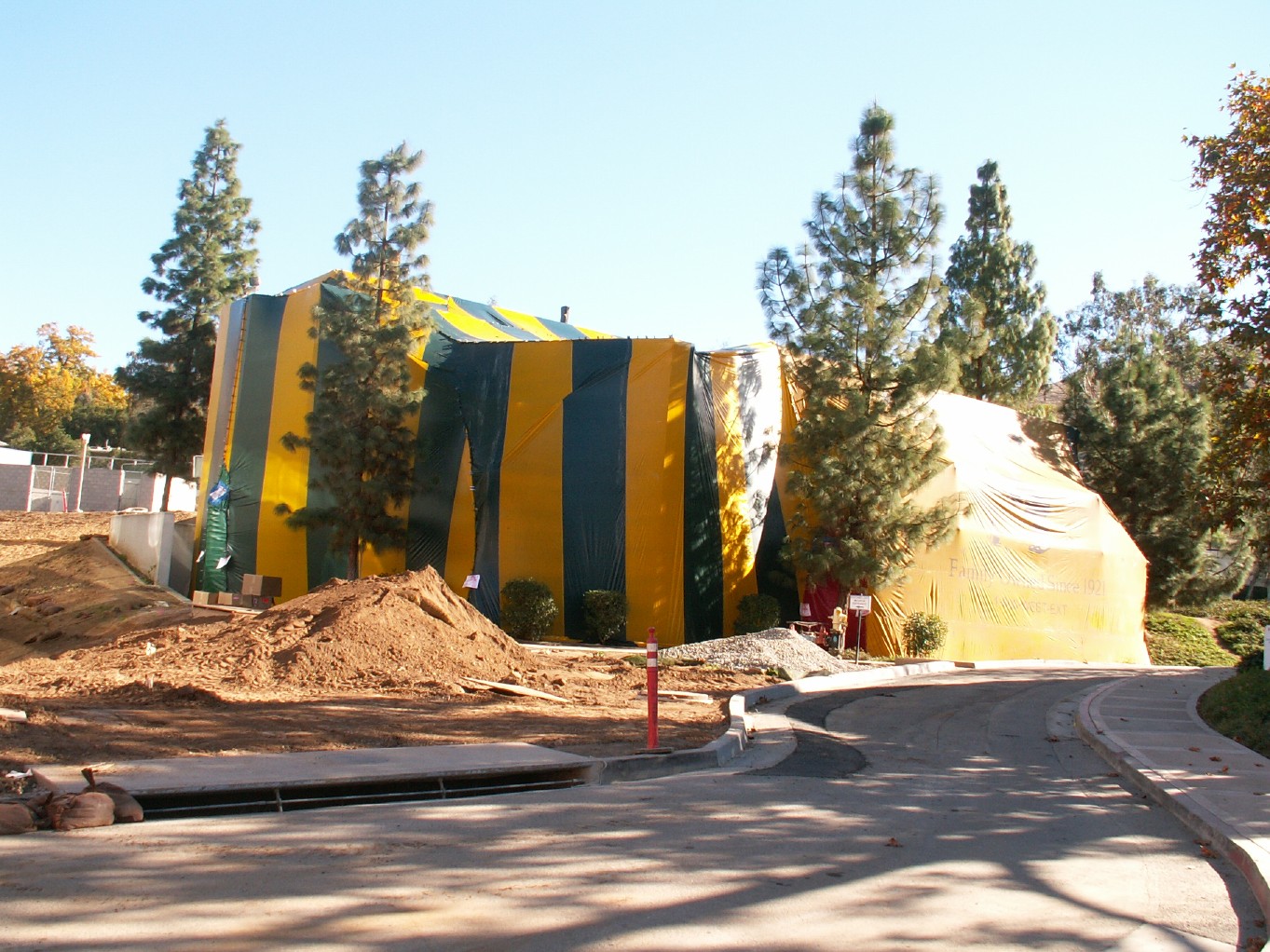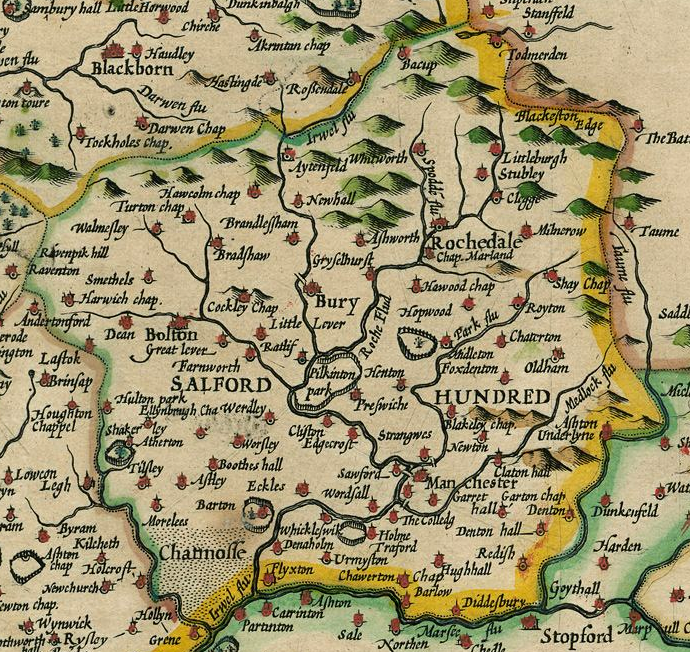|
Factory Act 1802
The Health and Morals of Apprentices Act 1802 ( 42 Geo. 3. c. 73), sometimes known as the Factory Act 1802, was an Act of the Parliament of the United Kingdom designed to improve conditions for apprentices working in cotton mills. The Act was introduced by Sir Robert Peel, who had become concerned in the issue after a 1784 outbreak of a "malignant fever" at one of his cotton mills, which he later blamed on 'gross mismanagement' by his subordinates. The Act required that cotton mills and factories be properly ventilated and basic requirements on cleanliness be met. Apprentices in these premises were to be given a basic education and to attend a religious service at least once a month. They were to be provided with clothing and their working hours were limited to no more than twelve hours a day (excluding meal breaks); they were not to work at night. The act was not effectively enforced, and did not address the working conditions of 'free children' (children working in mills w ... [...More Info...] [...Related Items...] OR: [Wikipedia] [Google] [Baidu] |
42 Geo
4 (four) is a number, numeral and digit. It is the natural number following 3 and preceding 5. It is a square number, the smallest semiprime and composite number, and is considered unlucky in many East Asian cultures. Evolution of the Hindu-Arabic digit Brahmic numerals represented 1, 2, and 3 with as many lines. 4 was simplified by joining its four lines into a cross that looks like the modern plus sign. The Shunga would add a horizontal line on top of the digit, and the Kshatrapa and Pallava evolved the digit to a point where the speed of writing was a secondary concern. The Arabs' 4 still had the early concept of the cross, but for the sake of efficiency, was made in one stroke by connecting the "western" end to the "northern" end; the "eastern" end was finished off with a curve. The Europeans dropped the finishing curve and gradually made the digit less cursive, ending up with a digit very close to the original Brahmin cross. While the shape of the charact ... [...More Info...] [...Related Items...] OR: [Wikipedia] [Google] [Baidu] |
Radcliffe, Greater Manchester
Radcliffe is a market town in the Metropolitan Borough of Bury, Greater Manchester, England. It lies in the Irwell Valley northwest of Manchester and southwest of Bury, Greater Manchester, Bury and is contiguous with Whitefield, Greater Manchester, Whitefield to the south. The disused Manchester Bolton & Bury Canal bisects the town. Evidence of Mesolithic, Roman Britain, Roman and England in the High Middle Ages#Normans, Norman activity has been found in Radcliffe and its surroundings. A Roman road passes through the area, along the border between Radcliffe and Bury. Radcliffe appears in an entry of the Domesday Book as "Radeclive" and in the High Middle Ages formed a small parish and township centred on the Parish Church of St Mary, Radcliffe, Church of St Mary and the manorial Radcliffe Tower, both of which are Grade I listed buildings in Greater Manchester, Grade I listed buildings. Plentiful Coal mining in the United Kingdom, coal in the area facilitated the Industrial R ... [...More Info...] [...Related Items...] OR: [Wikipedia] [Google] [Baidu] |
Mrs Gaskell
Elizabeth Cleghorn Gaskell (''née'' Stevenson; 29 September 1810 – 12 November 1865), often referred to as Mrs Gaskell, was an English novelist, biographer, and short story writer. Her novels offer detailed studies of Victorian society, including the lives of the very poor. Her first novel, ''Mary Barton'', was published in 1848. Her only biography '' The Life of Charlotte Brontë'', published in 1857, was controversial and significant in establishing the Brontë family's lasting fame. Among Gaskell's best known novels are '' Cranford'' (1851–1853), '' North and South'' (1854–1855), and '' Wives and Daughters'' (1864–1866), all of which have been adapted for television by the BBC. Early life She was born Elizabeth Cleghorn Stevenson on 29 September 1810 in Lindsey Row, Chelsea, London, now 93 Cheyne Walk. The doctor who delivered her was Anthony Todd Thomson, whose sister Catherine later became Gaskell's stepmother. She was the youngest of eight children; only she an ... [...More Info...] [...Related Items...] OR: [Wikipedia] [Google] [Baidu] |
Sir Robert Peel, 1st Bt Cropped
''Sir'' is a formal honorific address in English for men, derived from Sire in the High Middle Ages. Both are derived from the old French "" (Lord), brought to England by the French-speaking Normans, and which now exist in French only as part of "", with the equivalent "My Lord" in English. Traditionally, as governed by law and custom, Sir is used for men who are knights and belong to certain orders of chivalry, as well as later applied to baronets and other offices. As the female equivalent for knighthood is damehood, the ''suo jure'' female equivalent term is typically Dame. The wife of a knight or baronet tends to be addressed as Lady, although a few exceptions and interchanges of these uses exist. Additionally, since the late modern period, Sir has been used as a respectful way to address a man of superior social status or military rank. Equivalent terms of address for women are Madam (shortened to Ma'am), in addition to social honorifics such as Mrs, Ms, or Miss. Ety ... [...More Info...] [...Related Items...] OR: [Wikipedia] [Google] [Baidu] |
John Aikin
John Aikin (15 January 1747 – 7 December 1822) was an English medical doctor and surgeon. Later in life he devoted himself wholly to biography and writing in periodicals. Life He was born at Kibworth Harcourt, Leicestershire, England, son of John Aikin (Unitarian), John Aikin, Unitarian divine, and received his elementary education at the Nonconformist (Protestantism), Nonconformist Warrington Academy, academy at Warrington, where his father was a tutor. He studied medicine at the University of Edinburgh, and in London under William Hunter (anatomist), William Hunter. He practised as a surgeon at Chester and Warrington. Finally, he went to Leiden in Holland, earned an M.D. in 1780, and in 1784 established himself as a doctor in Great Yarmouth. In 1792, one of his pamphlets having given offence, he moved to London, where he practised as a consulting physician. He lived in Church Street, Stoke Newington. However, he concerned himself more with the advocacy of liberty of conscie ... [...More Info...] [...Related Items...] OR: [Wikipedia] [Google] [Baidu] |
Outhouse
An outhouse — known variously across the English-speaking world otherwise as bog, dunny, long-drop, or privy — is a small structure, separate from a main building, which covers a toilet. This is typically either a pit latrine or a bucket toilet, but other forms of dry toilet, dry (non-flushing) toilets may be encountered. The term may also be used to denote the toilet itself, not just the structure. Outhouses were in use in cities of Developed country, developed countries (e.g. Australia) well into the second half of the twentieth century. They are still common in rural areas and also in cities of developing countries. Outhouses that are covering pit latrines in densely populated areas can cause groundwater pollution. Design aspects Common features Outhouses vary in design and construction. They are by definition outside the dwelling, and are not connected to plumbing, Sanitary sewer, sewer, or septic system. The World Health Organization recommends they be built a ... [...More Info...] [...Related Items...] OR: [Wikipedia] [Google] [Baidu] |
Tobacco
Tobacco is the common name of several plants in the genus '' Nicotiana'' of the family Solanaceae, and the general term for any product prepared from the cured leaves of these plants. More than 70 species of tobacco are known, but the chief commercial crop is ''N. tabacum''. The more potent variant ''N. rustica'' is also used in some countries. Dried tobacco leaves are mainly used for smoking in cigarettes and cigars, as well as pipes and shishas. They can also be consumed as snuff, chewing tobacco, dipping tobacco, and snus. Tobacco contains the highly addictive stimulant alkaloid nicotine as well as harmala alkaloids. Tobacco use is a cause or risk factor for many deadly diseases, especially those affecting the heart, liver, and lungs, as well as many cancers. In 2008, the World Health Organization named tobacco use as the world's single greatest preventable cause of death. Etymology The English word 'tobacco' originates from the Spanish word ''taba ... [...More Info...] [...Related Items...] OR: [Wikipedia] [Google] [Baidu] |
Fumigation
Fumigation is a method of pest control or the removal of harmful microorganisms by completely filling an area with gaseous pesticides, or fumigants, to suffocate or poison the pests within. It is used to control pests in buildings (structural fumigation), soil, grain, and produce. Fumigation is also used during the processing of goods for import or export to prevent the transfer of exotic organisms. Structural fumigation targets pests inside buildings (usually residences), including pests that inhabit the physical structure itself, such as woodborers and drywood termites. Commodity fumigation, on the other hand, is also to be conducted inside a physical structure, such as a storage unit, but it aims to eliminate pests from infesting physical goods, usually food products, by killing pests within the container which will house them. Each fumigation lasts for a certain duration. This is because after spraying the pesticides, or fumigants, only the pests around are eradicated. ... [...More Info...] [...Related Items...] OR: [Wikipedia] [Google] [Baidu] |
Whitewash
Whitewash, calcimine, kalsomine, calsomine, asbestis or lime paint is a type of paint made from slaked lime ( calcium hydroxide, Ca(OH)2) or chalk (calcium carbonate, CaCO3), sometimes known as "whiting". Various other additives are sometimes used. Use as paint Whitewash cures through a reaction with carbon dioxide in the atmosphere to form calcium carbonate in the form of calcite, a type of reaction generally known as carbonation or by the more specific term, carbonatation. It is usually applied to exteriors, or interiors of rural dairies because of its mildly antibacterial properties. Whitewash can be tinted for decorative use and is sometimes painted inside structures such as the hallways of apartment buildings. A small amount can rub off onto clothing. In Britain and Ireland, whitewash was used historically in interiors and exteriors of workers' cottages and still retains something of this association with rural poverty. In the United States, a similar attitude is exp ... [...More Info...] [...Related Items...] OR: [Wikipedia] [Google] [Baidu] |
Thomas Percival
Thomas Percival (29 September 1740 – 30 August 1804) was an English physician, health reformer, ethicist and author who wrote an early code of medical ethics. He drew up a pamphlet with the code in 1794 and wrote an expanded version in 1803, '' Medical Ethics; or, a Code of Institutes and Precepts, Adapted to the Professional Conduct of Physicians and Surgeons'' in which he coined the expression "medical ethics". He was a founding subscriber of the Portico Library in Manchester and a pioneering campaigner for public health measures and factory regulation in the city. Background He was born in Warrington, Lancashire, on 29 September 1740, the son of Joseph Percival and his wife, Margaret Orred. He lost both his parents when he was three years old, so his older sister was responsible for his early education. Once he was old enough, he was placed in a private academy in his home town. He also spent time at the Boteler Grammar School, Warrington. He was enrolled as one of th ... [...More Info...] [...Related Items...] OR: [Wikipedia] [Google] [Baidu] |
Manchester, England
Manchester () is a city and the metropolitan borough of Greater Manchester, England. It had an estimated population of in . Greater Manchester is the third-most populous metropolitan area in the United Kingdom, with a population of 2.92 million, and the largest in Northern England. It borders the Cheshire Plain to the south, the Pennines to the north and east, and the neighbouring city of Salford to the west. The city borders the boroughs of Trafford, Metropolitan Borough of Stockport, Stockport, Tameside, Metropolitan Borough of Oldham, Oldham, Metropolitan Borough of Rochdale, Rochdale, Metropolitan Borough of Bury, Bury and City of Salford, Salford. The history of Manchester began with the civilian settlement associated with the Roman fort (''castra'') of Mamucium, ''Mamucium'' or ''Mancunium'', established on a sandstone bluff near the confluence of the rivers River Medlock, Medlock and River Irwell, Irwell. Throughout the Middle Ages, Manchester remained a ma ... [...More Info...] [...Related Items...] OR: [Wikipedia] [Google] [Baidu] |
Salford (hundred)
The Salford Hundred (also known as Salfordshire) was one of the Hundred (county division), subdivisions (a hundred) of the Historic counties of England, historic county of Lancashire in Northern England. Its name alludes to its judicial centre being the township of Salford, Greater Manchester, Salford (the suffix ''-shire'' meaning the territory was appropriated to the prefixed settlement). It was also known as the Royal Manor of Salford and the Salford wapentake.. Origins The Manor or Hundred of Salford had Anglo-Saxon origins. The ''Domesday Book'' recorded that the area was held in 1066 by Edward the Confessor. Salford was recorded as part of the territory of ''Inter Ripam et Mersam'' or "Between Ribble and Mersey", and it was included with the information about Cheshire, though it cannot be said clearly to have been part of Cheshire. The area became a subdivision of the County Palatine of Lancaster (or Lancashire) on its creation in 1182. Salford Hundred Court In spite of ... [...More Info...] [...Related Items...] OR: [Wikipedia] [Google] [Baidu] |









